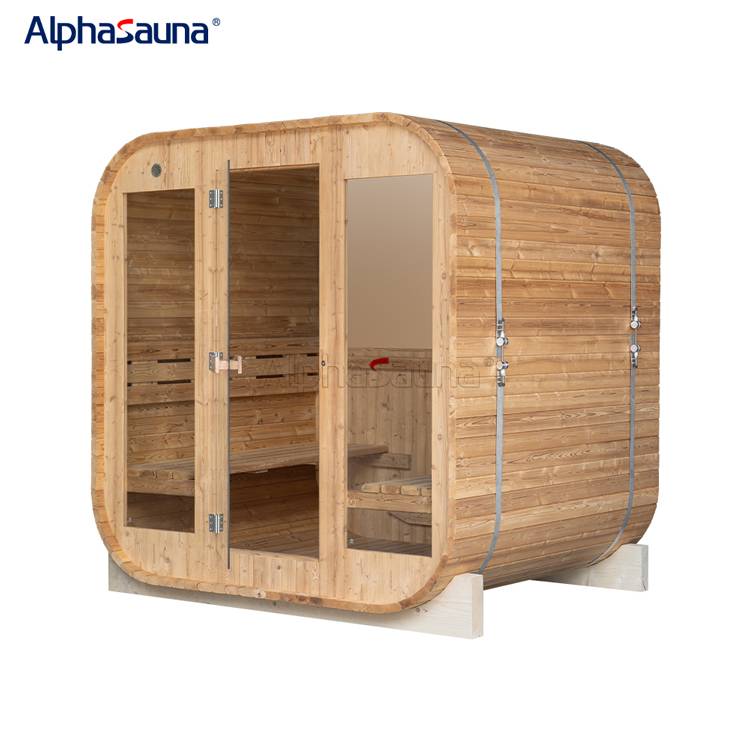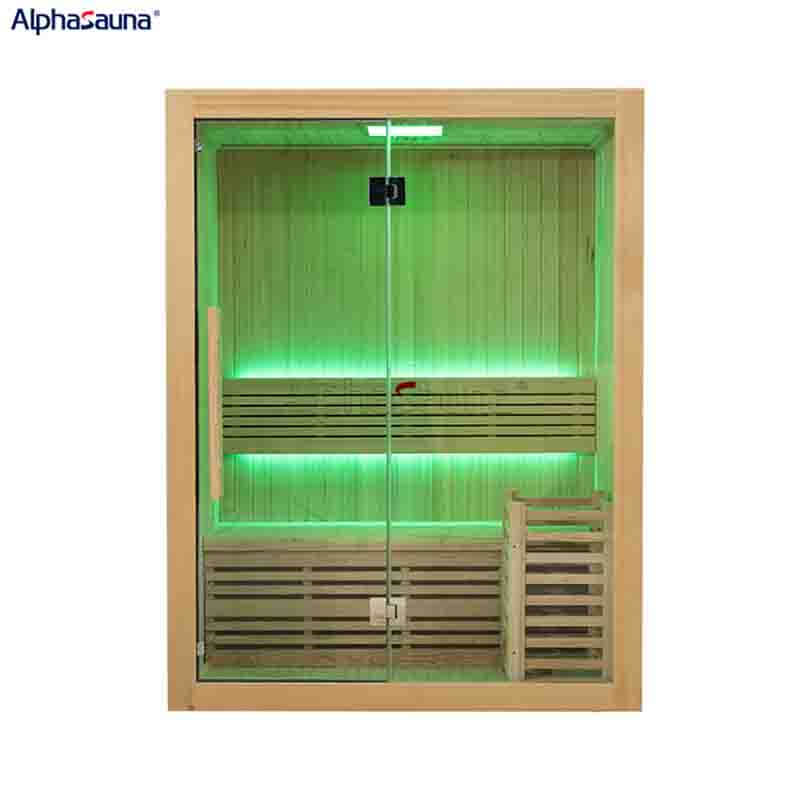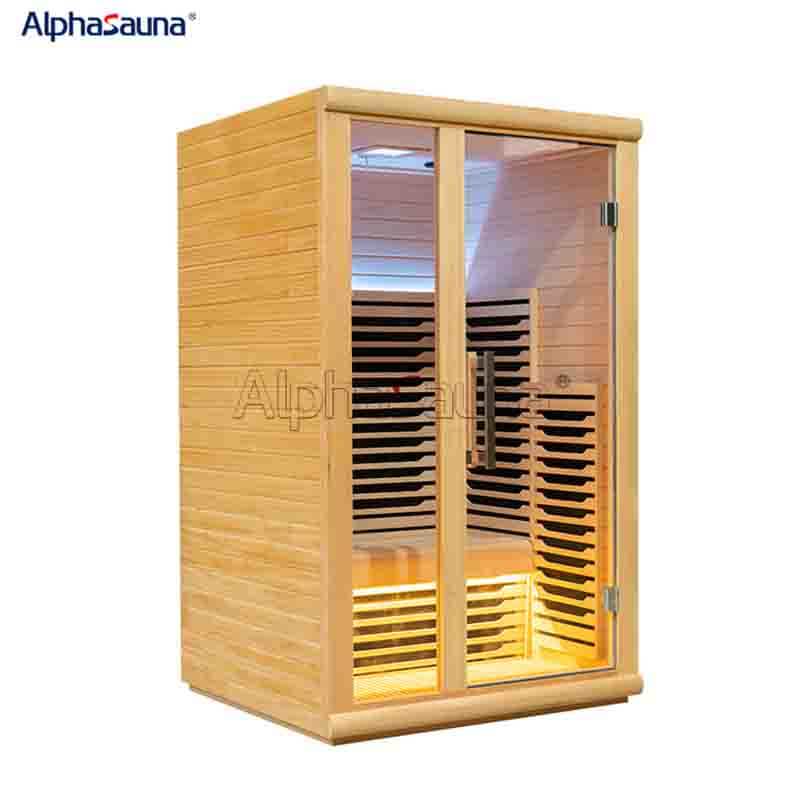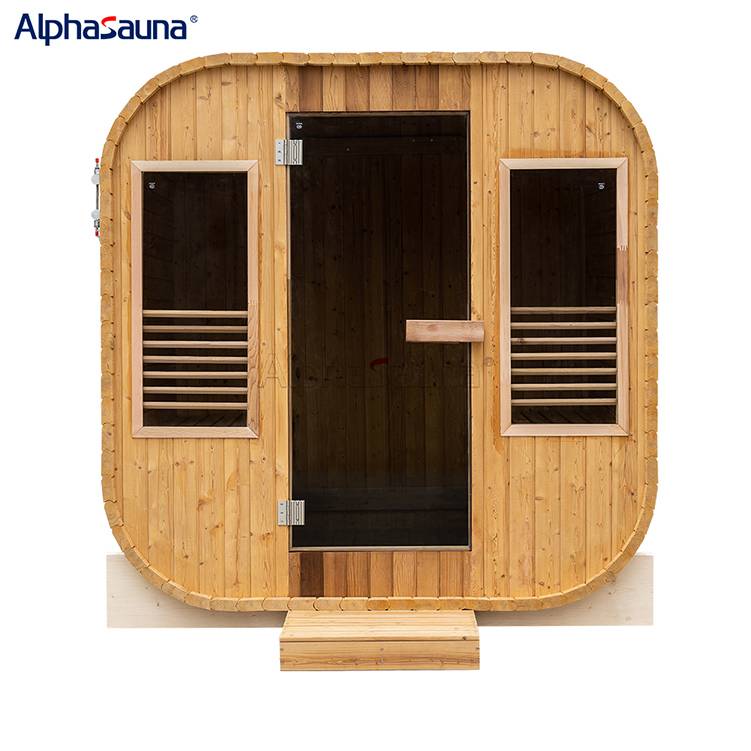ALPHA SAUNA & SWIMMING POOL SUPPLIER CO.,LTD
Health and dangers of sauna heat therapy: Understand and become familiar with sauna related knowledge
Health and dangers of sauna heat therapy: Understand and become familiar with sauna related knowledge
As people become more conscious of their health, they are seeking activities that can aid in their well-being. During their leisure time, individuals engage in
various health-promoting activities to help their bodies recover. Sauna, as a traditional therapy, has once again gained widespread attention and popularity.
After a tiring day, stepping into the warmth of a sauna, every inch of the skin enveloped in warmth, helps individuals shed the fatigue of the day. Sauna aids
in promoting body recovery by stimulating the body's response to heat through elevated temperatures. While sauna offers numerous benefits to the body,
incorrect or excessive use may pose certain risks. This article will explore the pros and cons of sauna therapy, as well as how to ensure the safety and effectiveness of sauna usage.
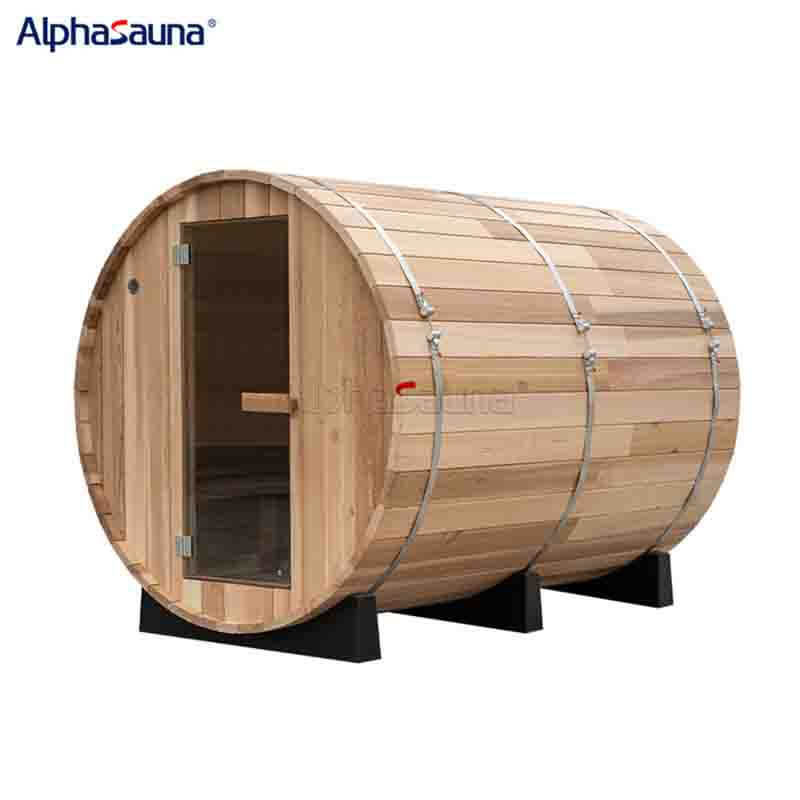
What are the possible health benefits of sauna heat therapy?
1. Promoting Cardiovascular Health: Sauna therapy can enhance blood circulation, increase heart rate, and improve blood flow, thereby promoting
cardiovascular health. In the high-temperature environment of the sauna, the body functions as if engaged in mild aerobic exercise, which can help
strengthen cardiac function and promote cardiovascular health.
2. Detoxification Promotion: The high-temperature environment of the sauna facilitates significant sweating, aiding in the elimination of waste and
toxins from the body. This helps cleanse the skin, purify the body, and promote metabolic and detoxification functions.
3. Alleviating Muscle Pain: The high-temperature environment of the sauna helps the body relax, relieve fatigue, loosen muscles, and alleviate muscle
pain. Sauna therapy can assist in alleviating muscle pain associated with conditions such as arthritis and rheumatism, reducing discomfort and aiding in the body's recovery.
4. Improving Mental and Physical Health: The comfortable environment of the sauna promotes relaxation, stress reduction, anxiety relief, and tension
alleviation, promoting a balance of mental and physical health and thereby improving overall well-being.
5. Enhancing Sleep Quality: Sauna therapy can relax the body and mind, facilitating rapid onset of sleep, thereby improving sleep quality. However, individual
responses may vary; some individuals may experience no change in sleep quality after sauna use, while others may experience improved sleep quality and
easier onset of sleep. Regular sauna use may influence sleep to some extent. Therefore, individuals experiencing chronic insomnia may consider sauna
therapy to improve sleep quality, but if there is no improvement, medical advice should be sought.
6. Boosting the Immune System: Sauna therapy can boost metabolism, activate the immune system, and enhance the body's resistance to disease,
thereby improving immunity and strengthening the immune system.
In summary, moderate and proper sauna therapy can bring many benefits to the body. However, attention should also be paid to the duration and
temperature of sauna use to ensure safety and avoid adverse effects from excessive use or high temperatures. Patients with heart disease, cardiovascular
disorders, high blood pressure, low blood pressure, and respiratory diseases are advised to avoid sauna use, or consult a doctor before sauna therapy
to ensure its safety and effectiveness.
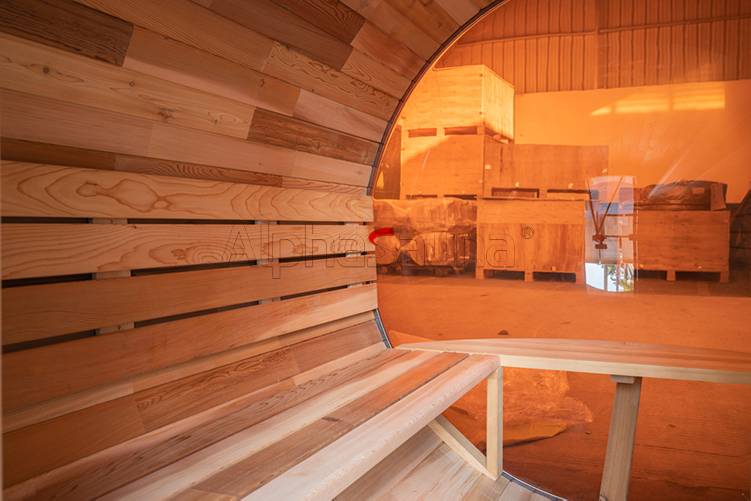
Are the heat treatments of traditional saunas and infrared saunas the same?
Traditional sauna:
1. Sauna Heating Elements: The heating elements in traditional saunas typically consist of sauna stoves and sauna stones. The sauna stove heats the
air temperature inside the sauna room, and water is poured over the sauna stones, which have reached a certain temperature, to generate steam and
provide humidity. The temperature in such saunas usually ranges between 70 to 100 degrees Celsius, with moderate humidity.
2. Thermal Therapy Effects: Traditional saunas primarily elevate the body temperature by heating the air temperature inside the sauna room, thereby
affecting both the surface and internal temperature of the human body.
3. Humidity: Traditional saunas are usually equipped with sauna stoves and sauna stones, which, when heated and water is added, generate steam,
increasing the humidity inside the sauna room. Consequently, the air in traditional saunas is more humid with higher humidity levels.
4.Energy Consumption: The heating method of traditional saunas involves heating the air first and then heating the body, requiring a longer time to
reach the appropriate temperature and thus consuming relatively more energy.
1. Sauna Heating Elements: The heating element in an infrared sauna is typically an infrared heater. It heats the body temperature by emitting
infrared radiation and does not rely on heating the air temperature inside the sauna room to achieve the sauna effect. Therefore, the temperature
inside an infrared sauna is relatively lower compared to a traditional sauna, usually ranging between 40 to 60 degrees Celsius.
2. Thermal Therapy Effects: Infrared saunas heat the body by emitting infrared radiation directly into the skin, which can achieve deeper thermal
therapy effects. This helps alleviate muscle pain, relax the body, and promote blood circulation.
3. Humidity: Unlike traditional saunas that produce steam, infrared saunas do not generate steam, resulting in lower humidity levels and a drier
environment inside the sauna room. However, the lower temperature in infrared saunas can provide a more comfortable sauna experience in terms of temperature.
4. Energy Consumption: Infrared saunas heat the body directly by emitting infrared radiation, resulting in a relatively faster heating process.
It does not require as much time to reach the desired sauna temperature, thus consuming less energy.
In summary, the thermal therapy effects of traditional saunas and infrared saunas may differ slightly due to the different heating methods.
However, both types of saunas offer relaxation, stress relief, muscle relaxation, relief from muscle pain, improved blood circulation, and overall
well-being. There may be subtle differences in the extent of their effects, but both sauna types are designed to provide a comfortable and relaxing
thermal therapy experience. The choice between the two sauna types can depend on individual preferences, needs, and health conditions to ensure
maximum enjoyment of sauna therapy benefits.
Questions and answers about sauna heat therapy
1、what is a good sauna temp?
The temperature inside a sauna typically ranges between 70 and 100 degrees Celsius, which is relatively safe and comfortable. However, the specific
temperature can be adjusted based on individual preferences, needs, and tolerance levels. For first-time sauna users, it's advisable to start with a lower
temperature and gradually increase it as the body adjusts, aiming to enhance the sauna experience and comfort. Individuals sensitive to high
temperatures should avoid excessively high sauna temperatures to prevent adverse effects on the body. Adjusting the temperature according to
one's own condition allows for the maximum enjoyment of the sauna's comfort. It's also essential to ensure adequate ventilation in the sauna room
to prevent discomfort or overheating caused by high temperatures and enclosed spaces. Installing a ventilation system in the sauna room helps
maintain proper ventilation without compromising the sauna experience. Additionally, it's important to be mindful of the duration spent in the sauna,
as prolonged exposure to high temperatures can have adverse effects on the body.
2、what temp for traditional sauna and infrared sauna
Choosing the appropriate temperature can enhance the sauna experience, comfort, and effectiveness of sauna therapy. Traditional saunas, which
generate heat and steam through sauna stoves and sauna stones, typically operate at higher temperatures, usually ranging between 70 and 100
degrees Celsius. Traditional saunas are suitable for those who can tolerate high-temperature environments and seek a more pronounced sauna experience.
In contrast, infrared saunas heat the body by emitting infrared radiation directly into the skin, resulting in lower temperatures, usually between
40 and 60 degrees Celsius. The temperature in infrared saunas is relatively more comfortable than traditional saunas, making them suitable for
individuals seeking a relaxing and comfortable sauna experience, especially those sensitive to high temperatures or experiencing physical discomfort.
Infrared saunas can penetrate the skin more deeply, providing a more profound sauna effect.
While there is a significant difference in temperature between the two types of saunas, it is essential to adjust the temperature based on individual
preferences, habits, physical condition, and comfort level to ensure maximum enjoyment and relaxation during the sauna experience.
The impact of a suitable sauna room on the effectiveness of sauna heat therapy:
Choosing the right sauna can maximize the effectiveness of sauna therapy and provide users with a more comfortable sauna experience,
making the selection of an appropriate sauna particularly important. Sauna selection can be based on individual preferences for temperature,
space requirements, budget, and personal preferences regarding size and type of sauna. Alpha Sauna specializes in manufacturing and selling
sauna facilities and accessories. Our range of sauna types includes traditional saunas, infrared saunas, two-person square saunas, outdoor barrel
saunas, indoor sauna tents, and other sauna facilities, offering users a diverse range of options. Some of our sauna models also support customization,
allowing users to tailor the sauna type, size, and other specifications to their requirements, all to provide a more comfortable and relaxing sauna environment.

